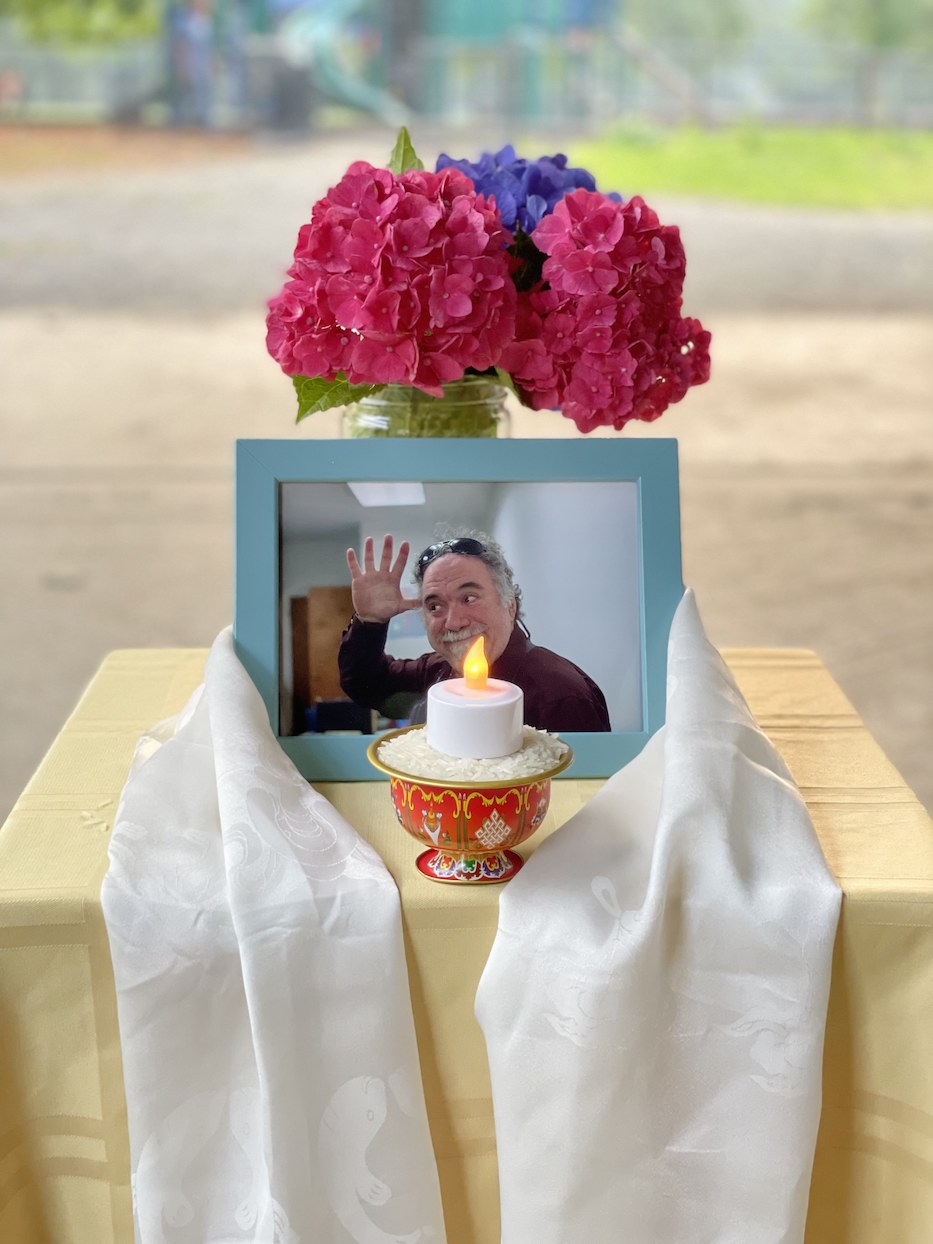
Bradley Street Bike Co-Op | Culture & Community | Integrated Refugee & Immigrant Services (IRIS) | Arts & Culture | Community Heroes
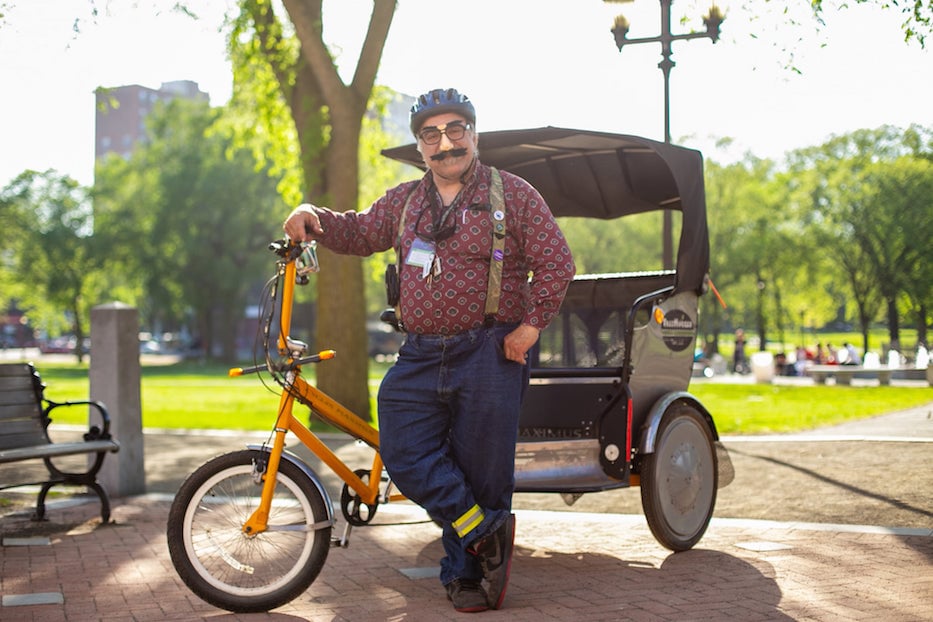
Chris Randall Photo.
It’s past the season when fledgling birds stumble up to fly. It’s well over a year since Paul Hammer died. His spirit of resilience is alive: in the people who shared their stories alongside him in Survivors of Society Rising; in the bicycle programs he created at Connecticut Mental Health Center (CMHC) and Integrated Refugee & Immigrant Services (IRIS); in the mental-health support groups he facilitated; in the refugee chefs who are now gracing New Haven with the soul food of their home countries, through Sanctuary Kitchen, Havenly, and Greenleaf Catering.
Paul Hammer’s unabashed imagination is alive in his writing. There was “A Bicycle Utopia,” “See You in the ICU,” “A Toast to Toast.” Even his emails leap off the screen: “A NOTE FROM THE DIRECTOR OF LAST-MINUTE PLANNING. Dear friends, you’re invited to my potluck dinner theater birthday party: the world premiere reading of NEVER FORGET THESE ELEPHANTS … There is bicycle parking on site. The J bus stops in front of the venue. Riding elephants is not recommended as noise ordinances and animal rights may be violated. Best, Paul, still in his late ‘50s.”
Six months before he died of suicide at the age of 64, he e-blasted a message with the subject line “On Christmas, a new prose poem of mine, unrelated to the holiday…enjoy (if it’s enjoyable.)”
If you or anyone you know is in crisis, dial 988 for the Suicide and Crisis Lifeline.
These days, I’m celebrating Paul’s living gift: his ability to help people rehabilitate together—through laughing, through sharing stories, and through the free-wheeling joy of cycling, the closest many of us will come to feeling the lightness of flying in our bodies.
*****
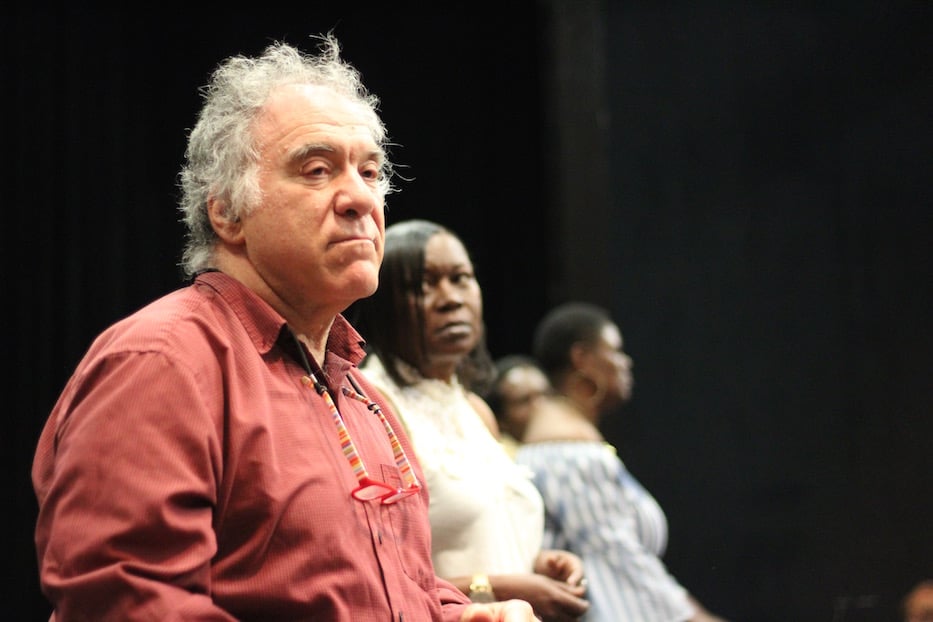
Hammer on stage at Long Wharf in July 2019. Lucy Gellman Pre-Pandemic File Photo.
There have been at least four celebrations of Paul’s life since he died on June 27, 2021. A small gathering of IRIS co-workers at East Rock Park, where we shared stories of Paul’s 11th-hour apartment set-ups for new arrivals on their way to New Haven and his penchant for out-of-the-box ideas, like the “refugee cabaret” he orchestrated in 2014.
An Elm City Cycling Paul Hammer Bicycle Tour, with stops at City Hall, Long Wharf Theater, and Kensington Playground.
A Quaker Friends Memorial Meeting of silent waiting and open sharing.
A celebration among people from Paul’s music and mental-health communities at the Unitarian Society of New Haven, with a screening of Paul singing his “Bicycle Renaissance.”
Here’s a little collage of tributes to Paul from those gatherings: “On countless occasions, Paul would burst into the office in song, often with improvised lyrics. Always in full voice! Grand gesticulations! A wobbly, but confident vibrato! Some of us would sing along.
"[He had] a zeal for peace and for what is just. If he cared about something, he would not let go until there was a group of us to rally around it…Sometimes he wore a Quaker Oats hat to Friends Meeting…He was the electricity among us…Paul brought Joy with a capital J! Delivering smiles, knocking routine on its rear end, always ready to dance, usually in questionable attire—how could you not love the guy? … Paul seemed to show up whenever a heart was required…Thank you, Paul, for helping us be as crazy as we need to be.”
Many people are closer with Paul than I am. Are and am because I believe each relationship lives and deepens, even when someone is gone from our sight. I cannot know what a loss Paul’s death is to each and all who love him. But I want to honor the sacred weight of each loss. Grieving is a messy, episodic art. Here’s part of my work in progress, my long-belated, unfinishable remembrance of Paul.
*****
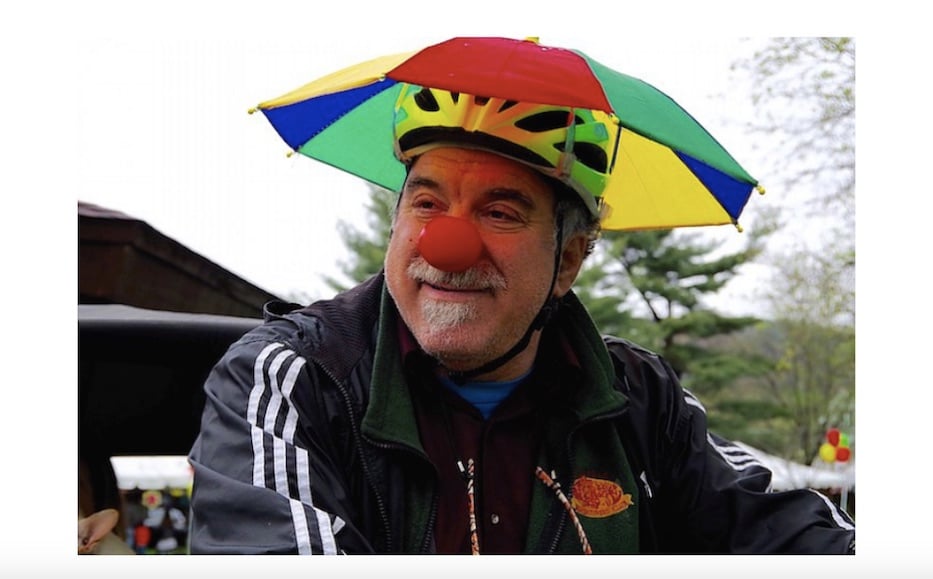
Lucy Gellman File Photo.
I got to know Paul when he roped me in to the bike program he started at IRIS. On a Thursday afternoon, circa 2013, we were standing in the back parking lot with a truckload of bikes. Paul had convinced the New Haven Police Department to donate unclaimed bikes, to provide refugees with an affordable form of transportation. Paul’s friend Joel LaChance, aka the Goatsville Cyclesmith, repaired the bikes for Paul to distribute. While we were waiting for people to arrive for Paul’s bike safety class, he told me about his project of learning to say thank you in as many languages as possible.
Paul moved through his mental list: Asante in Swahili, Yekenyeley in Tigrinya. I repeated after him and practiced, trying to learn fast enough to thank East African clients who showed up. But I had trouble remembering how to say thank you in Amharic: “It’s easy,” Paul told me. “Think about canary in Spanish, canario. And then announce you’re about to say it: I’m ‘an say canario: Amasecanario!”
Little did I know that Paul’s small bicycle recycling operation at IRIS would grow into a flourishing program of the Bradley Street Bike Co-op, where staff revive donated bikes for IRIS and CMHC. I like to imagine an interactive map of all the paths that cross because of Paul. The routes of all the rehabbed bikes circulating throughout New Haven: refugees who’ve crossed deserts and seas, now cycling green bike lanes to get to work; people living with mental illness on their way to support groups; kids pedaling around the duck pond at Edgewood Park.
Paul always had a little memo notebook in his shirt pocket, so he could scribble on the fly, no matter what a hurry he was in. We became fast friends delighting in language together: Fantastic vernaculars, idioms that animate ways of life. A Congolese asylum seeker taught us Pandanjila! her mother’s way of saying God makes a way out of no way. We loved talking with IRIS clients. We admired the ways they spoke English while they were learning: elisions of syllables, slants and mishaps of grammar that made language come alive like vines, winding turns of phrase that are often more poignant than the standard ways of saying things: How is it, your life, today? … These papers for Medicaid are driving me anxious… Sometimes you feel broken inside, but we have to keep our hope awake.
*****
When I lost my car keys on a hike in Old Lyme, I knew just who to call. Paul was glad to bring me my spare key from New Haven. He turned my mishap into an adventure. On the way home, he gave me a walking tour of the grounds around the Goodspeed Opera House. We were standing on a wooden footbridge over the Connecticut River, with the leaves falling onto the water’s edge the first September of our friendship when Paul told me he’d jumped off an East Rock cliff back in 2004. At the time, he was living with untreated bipolar disorder, because he didn’t have health insurance. I don’t remember how he broached his suicide attempt, or exactly what he said. I remember there was a surprising ease in the way he told me: He wasn’t revealing a dark secret or a freight of pain. He was sharing a sacred weight that guided his life.
If you or anyone you know is in crisis, dial 988 for the Suicide and Crisis Lifeline
The conversation felt like Paul was opening a book and inviting me into a story that shaped him: When he jumped, his friend Lianne happened to be walking her dog Pearl along the Mill River. She saw someone tumbling down. She called 911. The police, EMTs, and firefighters came, but they couldn’t find the person. Lianne tried letting her dog off leash to search in the woods. And Pearl led them to Paul, who’d dropped 600 feet. They rushed him to Yale-New Haven Hospital, where he was treated for brain trauma. When he woke up from the coma, he was unable to move his legs. The first thing he remembered when he told the story was reading the cards people had written him, telling him what they meant to him.
That was the beginning of Paul’s rehabilitation. The brain injury made him eligible for Social Security Disability, which opened the door for him to get Medicare early. Decent health insurance gave him access to medication and therapy that enabled him to live well with bipolar disorder.
Lianne and Pearl and the trees saved his life that day at East Rock, Paul told me. The branches he hit on his way down and the brush on the ground slowed and softened his fall.
*****
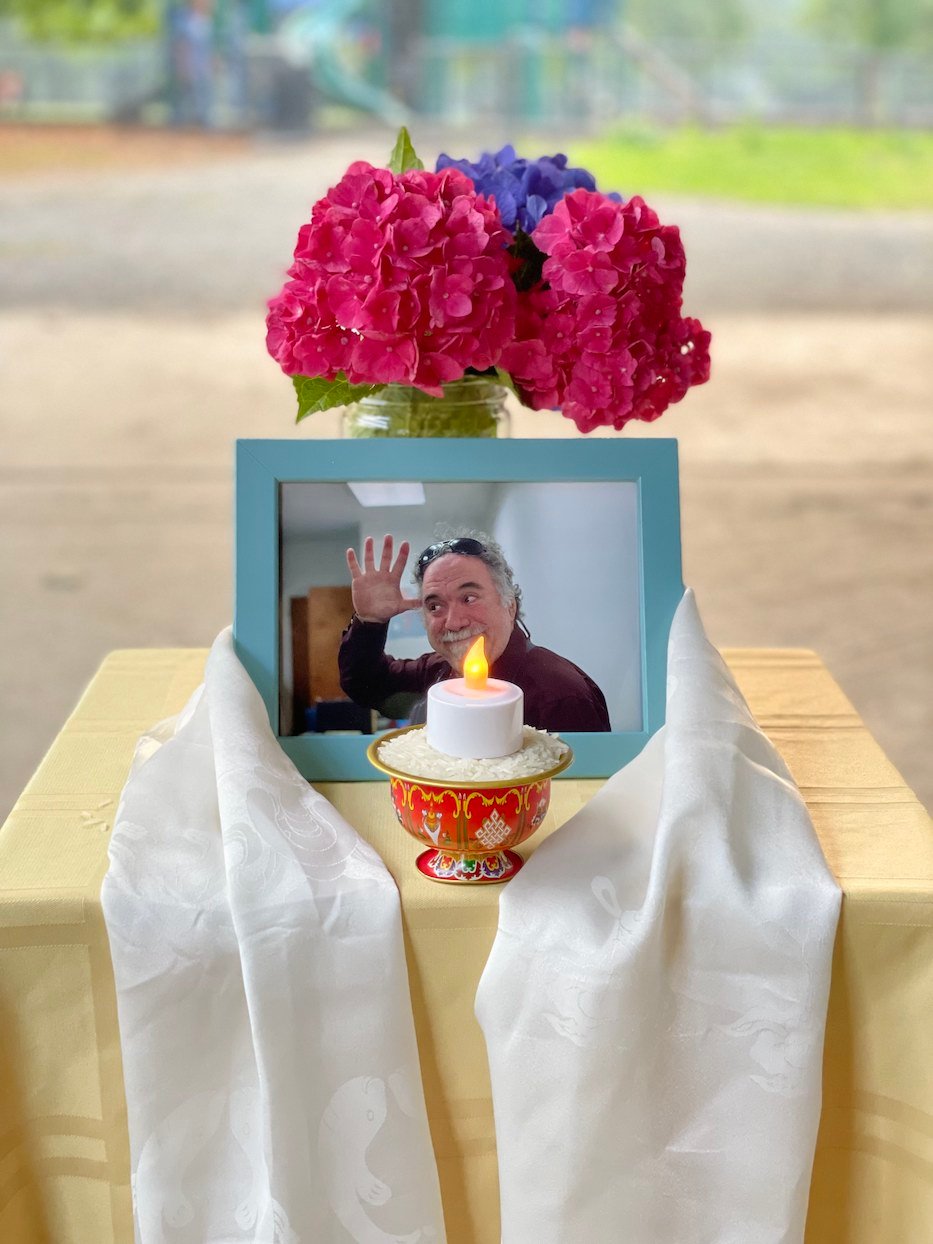
Pema Bhutia Photo.
Whenever I walk the East Rock trails with my dog Nelson, I remember the story of Paul falling through the trees. I notice the roots that protrude through the ground and branch into one another, like veins on the back of a hand. I imagine a map underground: thousands of roots connecting to share resources, like the communities of care Paul participated in. A few weeks after he died, I discovered a side path that goes through the knotty pines that shed their soft needles year after year, making a carpet over the rocks and roots. I felt the buoyant trail through my shoes. A prayer arranged itself in my mind: Thank you for this forest that caught Paul, the branches that broke his fall, the straw bed that gave him a nest to land in, the friend and the dog who found him.
My hiking companion Nelson is a long-eared, barrel-chested terrier rescue who survived Hurricane Harvey. He looks a bit like my favorite magical creature, Falkor the Luckdragon from The Neverending Story, especially in the face: lakes for eyes, shaggy brows, nostrils that look like they could breathe in whirlwinds. Falkor is a canine guardian angel whose floppy ears sail through the air like wings. The luckdragon animates our desire for some flying being to save us, from any harm that comes our way or arises from inside.
*****
In June, two of my co-workers threw a party for young refugee and immigrant students who participated in the IRIS After-School Program. We gathered in College Woods Park at the base of East Rock. Kids from Syria, Afghanistan, and Sudan played games and celebrated together with pizza and Takis and ice cream. If Paul could’ve been there, I bet he would’ve brought a truckload of donated tricycles and taught his bike safety class and serenaded the kids with “Dream the Impossible Dream.”
Two siblings found a little bird on the ground under a tree between the swing sets and the playground. Whenever the fledgling tried to get up, its legs gave way. We got a small box and covered the bottom with leaves and bark and straw. A girl I’ll call Ahlam cupped her hands around the bird and carried it to the nest we’d made. Her brother imagined that the fledgling was a Spanish-singing bird. He named her Juanita. He tried to feed her cracker crumbs and give her water through a Capri Sun straw.
But she just laid there on her side with one gray wing draped over her like a shawl, her legs drawn up to her dark orange chest, her lower lids lifting to cocoon her onyx eyes. We could see her whole body laboring to breathe and shivering. But she gave us hope: She opened her beak and let out a few faint chirps. Ahlam tucked her in with a spade-shaped leaf, saying “a blanket so she can sleep.”
I called a nearby wildlife crisis center. I was relieved they could take the bird. When I handed her to the wildlife rehabilitator, she took a look and said, “A raptor may have gotten her and dropped her. I’ll warm her up and put in an IV.”
On the drive home I prayed, Heal all the raptors that capture us into luckdragons.
*****
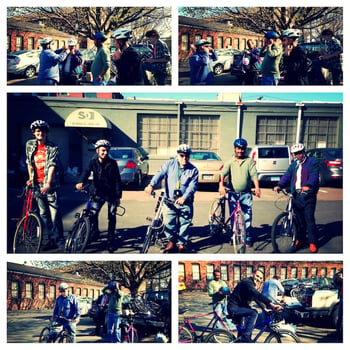 Paul’s miraculous recovery after jumping from the top of East Rock was only the beginning of his astonishing story of resilience. Paul turned living with mental illness and a brain injury into lifelines of connection and community. Paul is a testament to the ways people can help one another heal.
Paul’s miraculous recovery after jumping from the top of East Rock was only the beginning of his astonishing story of resilience. Paul turned living with mental illness and a brain injury into lifelines of connection and community. Paul is a testament to the ways people can help one another heal.
“[S]pending time around refugees played a role in recovering from clinical depression,” Paul wrote me in 2015. “Every time I thought I was having a bad day at IRIS I was reminded about how much our clients have been through, and how resilient most of them have been, even as they continue to face great challenges, including post-traumatic stress disorder. This put the struggles I was going through in context, not to dismiss them entirely, but rather to give me strength to move on.”
During the last few years of his life, Paul devoted himself to helping people with mental illness. He worked for the Yale Program for Recovery and Community Health (PRCH) and Rushford Hospital, using his lived experience to address financial hardship and employment barriers among people living with mental illness. He was a leader in the movement for peer support to be integrated into mental healthcare. He facilitated support groups and did suicide prevention trainings.
“I like to live as if I was spared for a reason,” told his friend Randall Beach in a 2020 Storycorps interview. In his mental-health work, Paul saw his calling to be “helping people envision a life worth living as an alternative to despair.”
Paul could give a jolt of life worth living in any circumstance. He had a way of swooping in, usually late, and just when you needed him. When our friend K. was having a psychiatric emergency, I was at a loss for what to do, but I knew to call Paul. A social worker had alerted the mobile crisis unit, but the police arrived first. They handcuffed K., though he hadn’t committed a crime. Paul showed up just in time to make an opening, to slow things down: Right when an officer was about to force our friend into a police car, Paul yelled across the hood, “I love you, K.!”
Everyone paused in awe, and in that moment, it was as if time turned another way. As if Paul’s words and breath cast a net of protection over K. And we all stood witness to a different kind of arrest–a seconds-long pause that de-escalated the tension. Next thing I knew, K. got into the mobile crisis van and began to receive the mental healthcare he needed. I believe Paul’s miracle of resilience lives in me and in K. and in everyone who witnessed his courage and kindness, his ability to magnify what matters most when we lose sight of life worth living.
Paul co-directed a play called Survivors of Society Rising at Long Wharf Theatre in 2019. The cast were New Haveners recovering from addiction, living with mental illness, and struggling to meet their basic needs in a society that doesn’t take care of people. Paul helped them develop the script together. “It was project of deep healing,” his co-director Elizabeth Nearing said. Paul was a person “of neverending possibility.” A woman who didn’t speak for the first three storytelling workshops ended up doing a dance number to “Singin’ in the Rain” with Paul on stage. He sat on a bench with a man who was too depressed to go anywhere else, until he got him to laugh. Paul said, “See, there’s hope.”
Paul was a geyser of survival humor. A friend of ours from Darfur told me, “Even when I didn’t understand his jokes, Paul was always making me laugh.” He started an improv troupe called Scrambled Edge. Paul called himself a Bipolar Bear, well medicated and clinically managed. When he missed a meeting with a leader in the New Haven Green Party, he told her, “Well, you know I have brain damage.” He joked about his own story, telling people you may have to jump off a cliff to get good healthcare, but wear a parachute. He said to Randall Beach, “I feel like someone keeps sprinkling Lucky Charms on me.”
For Paul, disability and illness were not debilitating limitations. They were opportunities for creative adaptations. They were part of his ethic of neverending possibility. In an email I received from Paul, along with several IRIS co-workers, three months before he died, he floated his idea of inviting refugees and immigrants who cannot ride standard bicycles to participate in the adaptive cycling program at Gaylord Sports Association, where blind cyclists do tandem rides, and people with who cannot use their legs use handcycles to propel themselves with their arms.
He signed the message with a Hammer-tastic wordplay: “A penny-farthing (antique bicycle with the tiny and super-sized wheel) for your thoughts, Paul.”
*****
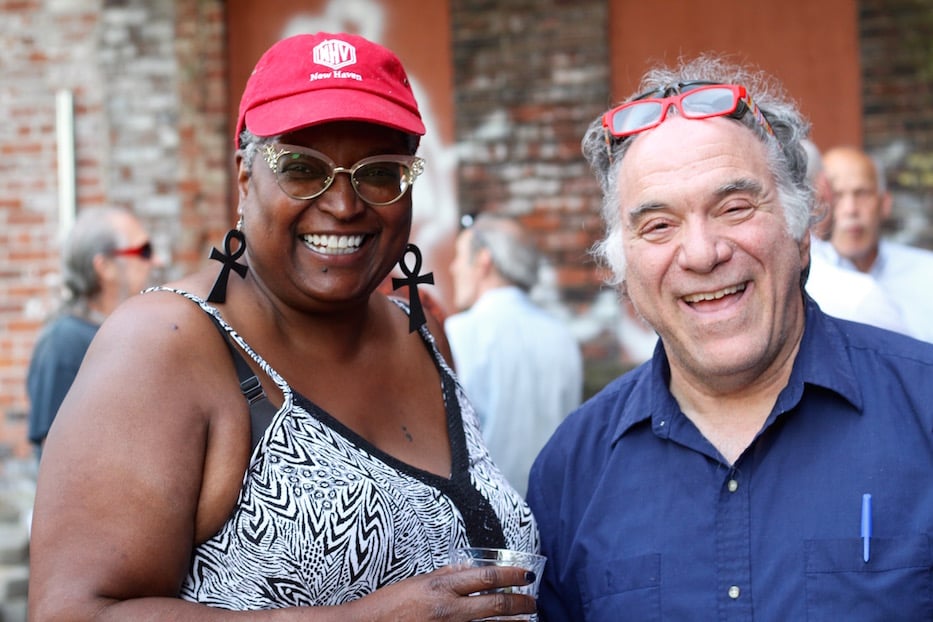
Inner City News Editor Babz Rawls Ivy and Paul Hammer in 2019. Lucy Gellman File Photo.
When I heard Paul died by suicide the day after it happened, I didn’t know what to do with such a stun of loss. I avoided my grief for weeks. I delayed reading his obituary. I buried myself in work.
After Paul died, I learned that he’d had to transition off of a psychiatric medication he’d been taking for years. When I did read the beautiful tributes to Paul in The New Haven Independent and the Arts Paper, I felt loss opening into awe: the wonder that is Paul: how a life so devoted to social justice and shaped by mental illness can be such a force of joy.
When I looked at Paul’s Facebook page for the first time since he died, my sorrow broke into laughing: His banner image is a picture of him in a snug T-shirt, giving someone a lift in his pedicab. Paul must’ve photoshopped the picture into an image of the New Haven skyline. The horizon is a dusk-orange blaze behind Paul’s head in the clouds. His whole face seems to be smiling aloud, as he peddles into the sunset.
I found all the photos of Paul I have, got prints, and made a collage that’s still in my writing room. Paul with the traffic jam of keys he wore around his neck: Zipcards, bike and apartment keys, fobs to God-knows-what. Paul pulling a child-sized lobster in his pedicab. Paul with a bullhorn at a peace rally on the Green. Paul, mid-pedal-stride, wearing his signature headgear: a mini umbrella attached to a bike helmet.
Sanjena Sathian wrote about the magic of Paul’s umbrella helmet in The New Journal: “I think of how Hammer’s moment of crisis is at the center of his idealism, how the realities of violence and crime and streets without bike lanes encroach on his utopian vision of the city he loves. From the top of East Rock, however, with the city stretching out in perfect miniature, you might imagine that a flying bicycle could sail over the spires of New Haven, uninhibited by gravity—and that, if you fell, an umbrella atop a bicycle helmet would be enough to help you glide safely to the ground.”
Looking back at Paul’s umbrella helmet inspired me to watch The Neverending Story again, a childhood favorite that can still soothe me after a shattering. The protagonist Bastian is a kid who lost his mom. Running from bullies and math homework, Bastian discovers a book about a world called Fantasia. There’s an enchanted forest, a desert of shattered hopes, a young hero named Atreyu, and a quest: to find a cure for an empress who’s dying from an illness that stems from the Nothing. All of Fantasia is endangered because people are losing hope in their dreams.
The most devastating scene in the movie happens when Atreyu is trying to cross a “swamp of sadness,” and his horse companion starts to sink. Atreyu begs him to live, to keep moving through. But you see his equine eyes choosing to let himself drown. Atreyu almost sinks into the swamp as well. After days and nights unconscious, he wakes up nestled between the chest and paw pad of Falkor. Now that he has awakened to a new day in the care of a luckdragon, Atreyu can come alive to his journey again. He flies on Falkor’s back, soaring through the clouds and the stars and swimming to the depths of the sea. It helps me grieve to see a kid who’d been at risk of sinking into despair riding his luckdragon, flying free as the birds of the air.
When Atreyu returns to the empress with no cure for her illness, she tells him about Bastian, who’s been reading The Neverending Story book all along: “Just as he was sharing in your story, others were sharing in his story.” Because I shared in Paul’s story, I know how generative courage and kindness and creativity can be.
With his living and his dying, Paul helped me see that every disaster has an afterlife: We need to grieve and celebrate. We get to rehabilitate together.
In Bastian’s story, sadness and the imagination go on a journey together, a trip that gives grief wings. After Fantasia dwindles to a grain of sand, Bastian imagines himself into the pocket of void where the empress sits. “Fantasia can arise anew,” she tells him, “from your dreams and wishes.”
The morning after I re-watched The Neverending Story, I woke up with a strand of a dream: Paul tumbling around, no broken bones, as if on a buoyant forest floor. Paul tumbling around, Stage Right, Stage Left, tumbling into a sun, setting.
I wrote him a letter: “Dear Paul, How strange it is to place you among the dead. Maybe the dust-to-dust of us never settles. You would know what to do with this line I scribbled in light of you: The forest catches you, and you fall up. I want to see you still careening, still dreaming impossible dreams. I don’t know what happens after life. For you, I hope it’s a bicycle utopia. Until we get wherever you are, please be our disheveled angel-saint, as you were on earth. Swoop in to help us pause in awe. Help us live into the miracle of resilience we witnessed through you.
Love, and a zillion penny-farthings for your help
Ashley (still in her mid-40s)”

